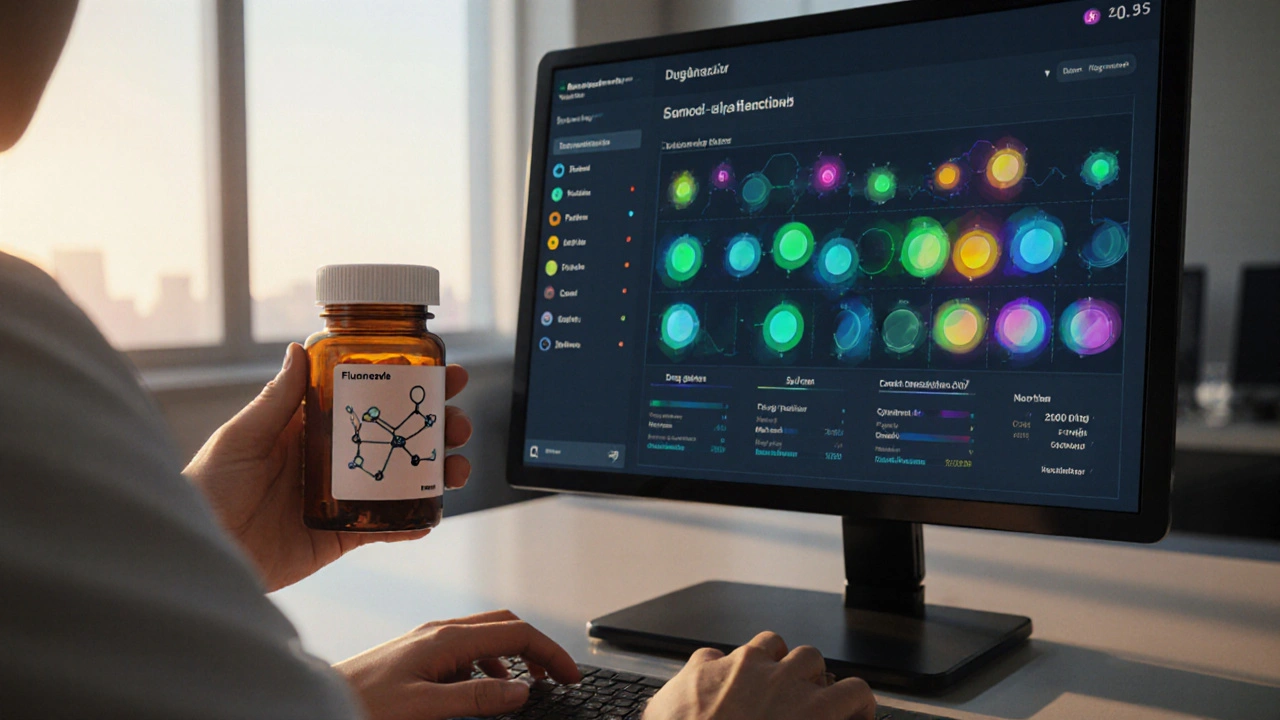Voriconazole: Essential Antifungal Overview
When dealing with severe fungal infections, Voriconazole is a triazole antifungal that targets a broad range of molds and yeasts. Also known as Vfend, it works by blocking the fungal enzyme lanosterol 14‑α‑demethylase, which disrupts cell‑membrane synthesis. The drug is most famous for treating invasive aspergillosis a life‑threatening lung infection caused by Aspergillus species, but it’s also effective against candidiasis, fusariosis, and several rare endemic mycoses. Because the medication is processed mainly by the CYP3A4 enzyme a liver enzyme that metabolizes many drugs, clinicians must watch for interactions with common medicines such as certain statins, immunosuppressants, and anti‑seizure agents. Oral tablets and an intravenous formulation give doctors flexibility to start treatment in a hospital and then switch patients to pills for home use. Typical adult dosing starts with a loading dose of 6 mg/kg every 12 hours for two doses, followed by a maintenance dose of 4 mg/kg every 12 hours, but adjustments are often needed based on blood levels, kidney function, and age. The close link between voriconazole metabolism and CYP3A4 creates a clear semantic triple: Voriconazole is metabolized by the CYP3A4 enzyme, and this relationship drives the need for therapeutic drug monitoring. Resistance can emerge when drug levels fall below the therapeutic window, especially in immunocompromised patients, so maintaining adequate exposure is critical. In transplant or hematologic‑malignancy settings, voriconazole is sometimes used prophylactically, but careful risk‑benefit assessment is required because of its interaction profile.
Beyond its core indication for invasive aspergillosis, voriconazole sits inside a larger ecosystem of antifungal therapy. Compared with older azoles like itraconazole or fluconazole, it offers higher potency against molds but also carries a sharper side‑effect profile, including visual disturbances, hepatotoxicity, and photosensitivity. Because the drug can raise liver enzymes, regular liver function tests are a must, and any signs of jaundice should trigger a dosage review. Patients on long‑term therapy often benefit from therapeutic drug monitoring (TDM), a practice that measures plasma concentrations to keep levels within the therapeutic window of 1‑5 µg/mL. TDM helps avoid sub‑therapeutic dosing that can lead to resistance, and it also prevents toxic peaks that increase the risk of liver injury or neurological symptoms. Another important factor is the drug’s effect on the QT interval; clinicians should check baseline cardiac status, especially when patients also use medications that prolong QT. The drug’s formulation influences its absorption—high‑fat meals boost oral bioavailability, which can be useful when rapid plasma levels are needed. Pediatric dosing follows weight‑based calculations and often requires closer monitoring because children metabolize voriconazole faster than adults. Elderly patients may need lower maintenance doses due to reduced clearance and higher susceptibility to neuro‑visual side effects. Interactions with immunosuppressants such as tacrolimus or cyclosporine often demand dose reductions of the partner drug, illustrating the semantic triple: Effective antifungal treatment requires therapeutic drug monitoring, which guides voriconazole dosing. Overall, balancing potency, safety, and drug‑drug interactions defines successful use of this antifungal.
Whether you’re a healthcare professional planning a treatment regimen or a patient curious about your prescription, understanding voriconazole’s strengths and limits is key. The drug’s broad spectrum makes it a go‑to choice for hospitals dealing with invasive mold infections, while its interaction potential demands careful medication review. In the articles below you’ll find practical guides on buying generic versions safely, cost comparisons across regions, and step‑by‑step advice for managing side effects. We also break down how voriconazole stacks up against other antifungals, what to expect during IV‑to‑oral switches, and how to interpret TDM results. Additionally, we cover specific considerations for transplant recipients, cancer patients, and children, so you can see how the drug fits into various clinical scenarios. Armed with this context, you’ll be ready to dive into the detailed resources that follow and make informed decisions about treatment options, pricing, and safety.
Diflucan vs Alternatives: Fluconazole Comparison Guide
- Medications
- 13


